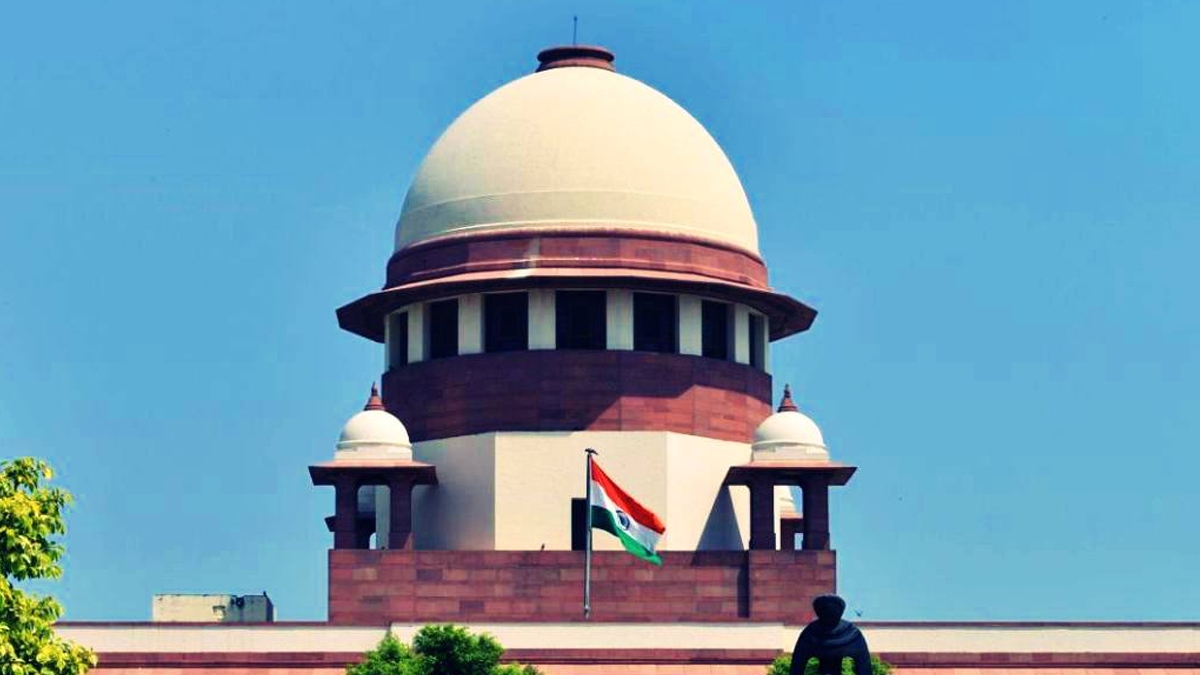
09-03-2024 (Important News Clippings)
To Download Click Here.
 Date:09-03-24
Date:09-03-24
Critique Isn’t Crime
Cops get another lesson on basics of democracy from SC.
TOI Editorials

WhatsApp disagreement | A WhatsApp group is by design a closed club. Not the platform for mass incitement or harm. In Maharashtra, a WhatsApp group member posted that the abrogation of Article 370 was a “black day” and also greeted Pakistan on its independence day. It led to an FIR and Bombay HC dismissed a writ petition filed by the accused.
Dissent and democracy | SC on Thursday quashed the FIR. Its reasoning was a restatement of the first principles of democracy. Dissent over policy actions of a govt is not a ground to accuse someone of creating enmity between groups or disharmony. Dissent and democracy coexist.
That’s possible because the Constitution guarantees freedom of speech. For sure there are reasonable restrictions here but India’s problem is unreasonable restrictions and arbitrary arrests. That’s what undermines faith in a democracy.
Thin-skinned are not benchmarks | SC said the standard used to judge the effect of expression is that of reasonable people. “We cannot apply the standards of people with weak and vacillating minds,” it added. This is a big part of the problem as the perpetually outraged are treated with deference by police forces.
Wake up, cops | Police came in for biting observations. SC said police forces need to be taught about constitutional guarantees of freedom of speech. It’s an apt suggestion. However, police professionalisation depends on insulating them from political parties. Will that ever happen?
France’s Abortion Right More Than Just a Right
ET Editorials
On March 8, France celebrated International Women’s Day with the wax-sealing ceremony of a constitutional revision that made abortion a fundamental right. Earlier in the week, the French Parliament voted overwhelmingly in favour of this amendment, making France the first country to guarantee abortion rights in its national charter. Abortion was legalised in 1975. The French move came in response to the US Supreme Court overturning Roe v. Wade in 2022, after nearly half a century of ensuring women legal access to abortion.
Catholic bishops and the Vatican have expressed concerns about the decision, with the latter arguing that in the era of universal human rights, there can be no ‘right’ to take a human life. Yet, 86% of the public has supported the decision.
France has a proud feminist history. During the French Revolution, Olympe de Gouges wrote the Declaration of the Rights of Woman and of the Female Citizen, demanding equal rights for women, including the right to divorce. While guaranteeing abortion rights adds to this history, the decision stands out for another reason: it demonstrates that the French polity and society have internalised the principle of separation of church and state — laïcité — in governance. This is borne out by the fact that the amendment came at a time when there is increasing support for a return to France’s Christian roots and the possibility of the far-right improving its electoral tally. Interestingly, Marine Le Pen, the leader of the far-right National Rally, and most of her party’s legislators voted in favour of the amendment. Amid shifting currents in French politics, the bipartisan backing for laïcité serves as a valuable example for other democracies.
Date:09-03-24
PASSAGE THROUGH INDIA
We need to get our tourism game face on, especially for high-value customers, for job creation.
Amitabh Kant, [ The writer is India’s G20 sherpa. ]
Today, the global tourism market is valued in excess of $5 trillion, of which India’s share is less than 2%. India must aim to create 25 million new jobs through tourism in the next five years. States have a key role in making this a reality.
› Ease of doing tourism Cleanliness of cities and tourist destinations must be accorded the highest priority. More ambitious air quality action plans must be drawn up.
States must focus on improving connectivity from airports and stations to tourist destinations and circuits. Highspeed digital connectivity at these destinations must also be ensured. Development of tourism infrastructure around significant cultural and heritage circuits and destinations, in partnership with the private sector, is crucial. This includes enhancing connectivity to key Buddhist sites like Kushinagar in UP and Bodh Gaya in Bihar to attract East Asian tourists, ensuring that these destinations are accessible year-round.
Development of world-class museums and creating unique experiences through PPPs can also serve as cultural beacons.
› Of MICE and men India’s G20 presidency has positioned the country as a global focal point for the MICE — meetings, incentives, conferences, exhibitions — industry. Hosting over 220 meetings across 60 cities with 1 lakh-plus participants showcased India’s capability to manage large-scale international events. Creation of top-class venues such as the Bharat Mandapam and Yashobhoomi in Delhi have caught the world’s attention.
With the global MICE tourism market valued at $500 billion, India’s share is less than 1%, a figure that underscores immense growth potential. India must now aim to host every global convention and exhibition here. Developing convention and visitors’ bureaus, enhancing inter national exhibit spaces and improving overall destination management can serve as critical steps towards realising India’s immense potential in the MICE market.
› Making air waves India is the third-largest civil aviation market. There is immense potential for our airports to become transit hubs connecting North America and Europe to Southeast Asia, East Africa and Northeast Asia. This would have huge economic benefits. Schemes such as UDAAN have considerably improved domestic air connectivity.
Now is the time to boost international connectivity to key destinations.
Re-evaluating airconnectivity bilateral agreements, and boosting availability of seats with direct flights to tier-2 and -3 cities is critical. Indian airports must also be positioned as global hubs with direct connectivity to all major global destinations. At present, a vast segment of Indians travels long haul via third-country airports. India must transform its airports into global aviation hubs facilitating seamless connectivity between domestic and international airports.
› Club med destination India’s potential in health and wellness tourism is vast, and largely untapped. With Ayurveda, yoga and other traditional practices, India offers a unique proposition in the global wellness tourism sector. Its rich heritage in natural and holistic healing, combined with GoI’s push towards promoting Ayurveda and wellness beyond mere treatment, positions India as a compelling destination for those seeking physical, mental and spiritual rejuvenation. Introduction of AYUSH visas is a testament to GoI’s commitment to making India the epicentre of global wellness tourism.
› On the campaign trail Launch of avigorous, global Incredible India 2.0 campaign digitally can prove to be pivotal in marketing Indian destinations. An element in this strategy could be targeting NRIs and PIOs, harnessing emotional and cultural ties of this demographic, encouraging them to explore their heritage.
To enhance tourism and facilitate in creased international footfall, India could significantly benefit from adopting innovative visa policies, such as offering visa on arrival and visafree travel from target countries. These measures will simplify the process for tourists to visit India, making the country more accessible, and attractive, as a destination.
› Industrial tourism Giving industry status to the tourism sector would make it more commercially viable, leading to the sector getting benefits of power tariff and other taxes at industrial rates against the present requirement of paying at much higher commercial rates. It will also enable hospitality projects to get lending at much lower interest rates. This initiative needs to be undertaken by both central and state governments.
› Green cover According to a Booking.com sustainability study, 87% of travellers globally want to travel sustainably, and 68% of customers look for eco-friendly hotels. Hospitality sector must lead the green movement by making itself efficient in terms of energy, water waste, temperature adjustments and LED lighting. Sustainability must become the driving force, as it will be the key to enhancing value and attracting high-value customers.
The tourism sector in India is ready to pivot, with the potential to not only significantly enhance its contribution to the national GDP but also to become amajor source of employment and economic empowerment across the country. Such a strategic approach can not only elevate India’s position on the global tourism map but also unlock the goal of creating 25 million jobs in the next five years.
एक उपयोगी योजना
संपादकीय
यह अच्छा हुआ कि भारत सरकार धान की जगह दालें, मक्का और कपास उगाने वाले किसानों से न्यूनतम समर्थन मूल्य यानी एमएसपी पर उनकी पूरी उपज खरीदने की योजना लागू करने जा रही है। यह वही योजना है, जिसका प्रस्ताव केंद्रीय मंत्रियों ने पंजाब के किसान संगठनों को तब दिया था, जब वे अपनी मांगों पर जोर देने के लिए दिल्ली कूच की तैयारी कर रहे थे। उस समय पहले तो किसान नेताओं ने यह कहा कि वे इस पर अन्य कृषक नेताओं और कृषि विशेषज्ञों से विस्तार से विचार करेंगे, लेकिन फिर यकायक उन्होंने उसे ठुकरा दिया। ऐसा करके उन्होंने एक अवसर गंवाने का ही काम किया। यह उचित ही है कि पंजाब के किसान संगठनों की बेरुखी के बावजूद केंद्रीय मंत्री पीयूष गोयल ने यह स्पष्ट किया कि इस योजना को अगले सीजन से देश भर में लागू किया जाएगा। ऐसा करने की आवश्यकता इसलिए थी, क्योंकि एक तो पंजाब के किसान संगठन देश के सभी किसानों का प्रतिनिधित्व नहीं करते और दूसरे, यदि कोई उपयोगी योजना किसी राज्य विशेष के किसानों को रास नहीं आ रही तो इसका यह अर्थ नहीं कि उससे शेष देश के किसानों को भी वंचित रखा जाए। बेहतर होता कि पंजाब के किसान संगठन इस योजना पर सकारात्मक रवैये का परिचय देते।
पंजाब देश के उन राज्यों में शीर्ष पर है, जहां जरूरत से ज्यादा धान पैदा किया जा रहा है। धान उगाने में पानी की कहीं अधिक खपत होती है। पंजाब के किसान इससे भली तरह अवगत हैं कि भूजल के अत्यधिक दोहन से उसका स्तर नीचे जा रहा है, लेकिन वे पानी की कम खपत वाली फसलें उगाने को तैयार नहीं। यह रवैया तब है, जब पंजाब के कुछ इलाकों में भूजल स्तर कहीं अधिक नीचे चले जाने से खेती की जमीन के बंजर होने का खतरा पैदा हो गया है। इस खतरे की अनदेखी का कोई औचित्य नहीं, लेकिन दुर्भाग्य से ऐसा ही किया जा रहा है। देश के किसी भी हिस्से के किसान हों, यह ठीक नहीं कि वे उन फसलों को उगाने की जिद पकड़े रहें, जिनकी मांग कम है और जिनमें पानी की भी कहीं अधिक खपत होती है। मक्का और कपास के साथ मसूर, उड़द एवं अरहर की खेती में केवल कम पानी का इस्तेमाल ही नहीं होता, बल्कि उनकी मांग भी अधिक है। यह एक तथ्य है कि देश को दालों का आयात करना पड़ता है, जिसमें अच्छी-खासी विदेशी मुद्रा खर्च करनी पड़ती है। दलहन जैसी स्थिति तिलहन की भी है। निःसंदेह एक समय था, जब गेंहू, धान की खेती को प्राथमिकता देना आवश्यक था, लेकिन अब स्थिति बदल चुकी है और समझदारी बदलते वक्त के साथ कदम मिलाने में ही है। केंद्र सरकार के साथ राज्य सरकारों को चाहिए कि वे अपनी योजनाओं के जरिये किसानों को वही फसलें उगाने के लिए प्रोत्साहित करें, जिनकी मांग अधिक है और जो पर्यावरण के अनुकूल भी हैं।
महिला प्रबंधकों की प्राथमिकताएं
संपादकीय

